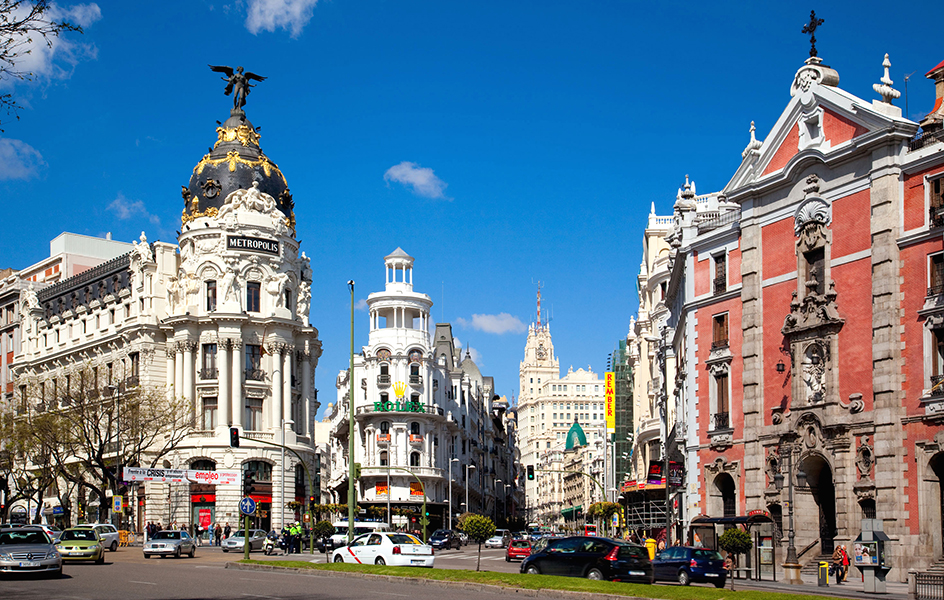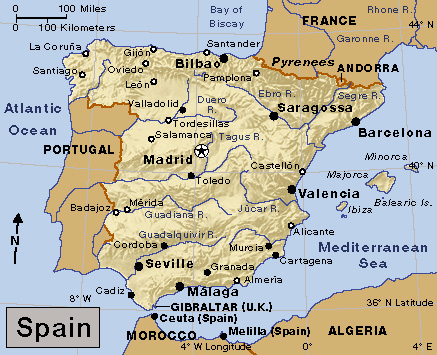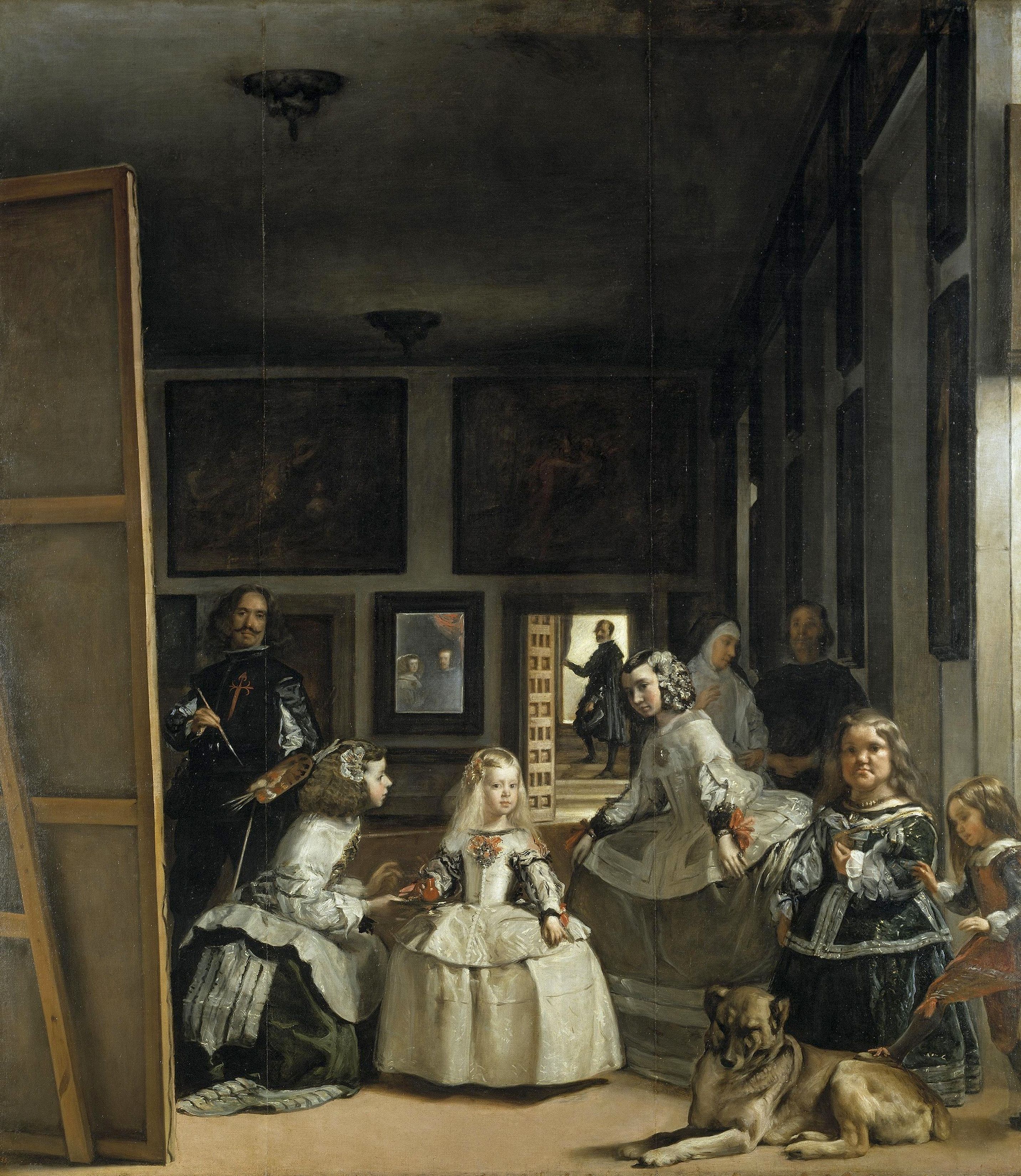Madrid, << muh DRIHD >> (pop. 3,305,408), is the capital and largest city of Spain. It stands on a plateau about 2,150 feet (655 meters) above sea level and is one of the highest capitals in Europe. Madrid became the capital largely because of its location near the exact geographic center of Spain.

Spain had reached its height as a colonial power when King Philip II made Madrid the capital in 1561. The Spanish colonial empire began to decline during the 1600’s, but Madrid remained an important center of government and culture. In the last half of the 1900’s, Madrid also became one of Spain’s leading industrial cities.
The city
covers about 234 square miles (606 square kilometers). The northwest part of Madrid suffered severe damage during the Spanish Civil War (1936-1939), but the area and its buildings have since been reconstructed and restored.


A large, crescent-shaped plaza called the Puerta del Sol (Gate of the Sun) marks the center of downtown Madrid. One of the city’s main streets, the Calle de Alcala, extends northeastward from the Puerta del Sol. The old section of Madrid lies west of the Puerta del Sol. A number of the buildings that line the narrow, winding streets of this area were built during the 1500’s and 1600’s.
Madrid’s modern business district stretches along the Calle de Alcala. Banks, hotels, restaurants, stores, and theaters line the Gran Via, the main street of the shopping and tourist section. The Salamanca district, a residential area built chiefly in the late 1800’s and the 1900’s, occupies the near northeast part of the city. A huge park called the Retiro covers more than 350 acres (142 hectares) just southeast of the center of Madrid.
Nearly all of Madrid’s famous buildings, museums, and monuments are in or near the old section and the business district. The Royal Palace, built in the 1700’s, stands at the western edge of the old section. The Spanish royal family lived in the palace until 1931, when King Alfonso XIII was forced to leave the country. Elaborate gardens border the palace, which is now a museum. In addition, Madrid has a number of lovely old churches and impressive public squares with fountains and statues.
Since 1950, rapid population growth has caused Madrid to expand in all directions. Today, residential areas and industrial suburbs surround the central city. Like other rapidly growing cities, Madrid has such problems as air pollution and crowded living conditions. Many of the city’s trees have been cut down to widen streets and to provide parking space for the increasing number of automobiles.
The people
of Madrid are called Madrilenos << `mah` druh LAYN yohs >>. They speak Castilian Spanish, the official language of Spain. Most people live in apartments because there are few houses in the crowded city.
Most stores and offices in Madrid open at 9 a.m. and close at about 1:30 p.m., when Madrilenos leave work to eat a leisurely lunch. The business places are open again from 5 p.m. to about 8 p.m. Like other Spaniards, most Madrilenos have dinner between 9 p.m. and midnight. They like to dine at Madrid’s many fine restaurants, which feature beef, lamb, and seafood dishes. Sidewalk cafes throughout the city are favorite meeting places, where Madrilenos chat with friends.
Soccer ranks as Madrid’s most popular sport. The Santiago Bernabeu stadium is the largest of three soccer stadiums in the city. It is home to Real Madrid, the city’s premier soccer team. Large crowds also attend the bullfights held at the Plaza de Toros.
Education and cultural life.
Madrid’s educational institutions, museums, and libraries make the city the cultural center of Spain. Complutense University of Madrid, one of the nation’s largest universities, occupies a section of Madrid called University City. The city also has a number of technical institutes.
Madrid is the home of one of the world’s outstanding art museums, the Prado, which is also called the National Museum of Painting and Sculpture. The Prado houses thousands of paintings by Spanish and foreign masters. The Prado’s exhibits of Spanish paintings include many works by El Greco and Francisco Goya. In addition, the museum displays paintings by Diego Velázquez, including Las Meninas.


The Reina Sofia art museum houses Picasso’s famous painting Guernica. Other museums in Madrid feature exhibits on Spanish culture, natural history, and science. In addition, the city is the home of Spain’s National Library and the National Historical Archives.
Climate.
Madrid has a dry climate, with hot summers and cool winters. It receives an average of less than 17 inches (43 centimeters) of rain a year. Temperatures average about 40 °F (4 °C) in January and about 74 °F (23 °C) in July. During August, which is usually the hottest month in Madrid, Madrilenos customarily leave Madrid for vacations at the beach or in the mountains.
Economy.
From the mid-1500’s to the mid-1900’s, the economy of Madrid depended on the city’s role as a government center. Most of the workers in Madrid had jobs related to politics or government administration. The city had almost no industry.
In the last half of the 1900’s, the Spanish government encouraged large-scale industrial development in Madrid and its suburbs. Today, the city ranks second to Barcelona as a Spanish industrial center. Factories in the Madrid area manufacture automobiles, chemicals, clothing, electronics, trucks, and other products.
Highways and railroads link Madrid to other Spanish cities. Madrid-Barajas Airport lies about 8 miles (13 kilometers) northeast of downtown Madrid.
History.
In the A.D. 900’s, the Moors, a Muslim people, built a fortress called Magerit on the site of what is now Madrid (see Moors). Spanish Christians, under King Alfonso VI of Leon and Castile, gained control of the area in 1083.
Madrid remained a small, unimportant town until 1561, when Philip II made it the capital of Spain. Philip, who ruled a huge colonial empire, chose Madrid primarily because of its central location. During the late 1500’s and early 1600’s, Madrid grew rapidly and became one of the great cities of western Europe. Wealthy aristocrats and royal officials built homes there. But the rapid population growth created problems. Most Madrilenos were poor and lived in shabby, crowded neighborhoods. Epidemics and a high crime rate made the city unsafe. During the 1700’s, the government took steps that made Madrid a cleaner and safer city.
French forces under Napoleon I occupied Madrid from 1808 to 1813. On May 2, 1808, a group of Madrilenos staged an unsuccessful revolt against the French. This uprising started a Spanish resistance movement that in time helped drive the French out of Spain.
Madrid, unlike many cities in a number of countries, failed to develop large industries during the 1800’s. As a result, it did not attract large numbers of workers, and its rate of population growth dropped.
Madrid attracted worldwide attention during the Spanish Civil War, which began in 1936. The city was the scene of fierce fighting between the Republicans, who supported the government, and the rebel forces of General Francisco Franco. The Republicans moved the capital to Valencia in 1936 and to Barcelona in 1937. After the defeat of the Republicans in 1939, Franco reestablished Madrid as the capital.
In the last half of the 1900’s, Madrid again experienced rapid population growth. Government programs to develop industry and to build modern housing and office buildings in the city helped contribute to Madrid’s growth.
In March 2004, bombs exploded on commuter trains in Madrid, killing nearly 200 people. The government charged Islamic terrorists with the attacks.
